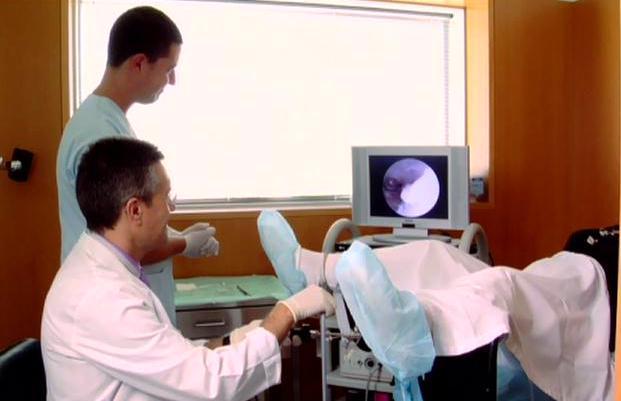
Endoscopic surgery in fertility treatments
Endoscopic surgery is by definition performed by accessing the site of intervention, either an organ or cavity, through natural or artificial orifices by using an optical system with camera and light that allows us to see what is going to be performed on a television monitor. Surgical manipulation is also done in these orifices or “ports” of entry.
It is now without a doubt, the surgery of choice for Reproductive Gynecology. We only consider traditional or open surgery in specific cases after evaluating their indication.
There are basically two types of gynecological endoscopy:
- Hysteroscopy.
- Laparoscopy.
Both of these can be diagnostic when the procedure only aims to diagnose a problem or condition, or surgical or operative, where in addition to diagnosing, we can perform treatment.
The advantages of endoscopic surgery are basically:
- Less aggressive technique, with less bleeding and complications.
- Shorter postoperative time and better recovery for the patient. Therefore, shorter hospitals stay and earlier return to work.
- Better treatment of problems related to reproductive aspects, since the visualization of internal genitals: uterus, ovaries, fallopian tubes, etc. is closer and more direct.
- Prevention of internal adhesions, with better results in subsequent assisted reproduction treatments.
- Better aesthetic result from fewer scars, or even none in the case of a Hysteroscopy.
The pathologies that we can diagnose and treat through Hysteroscopy are:
- Endometrial polyps.
- Submucosal fibroids.
- Adhesions.
- Septum or partitions.
- Endometriosis.
- Endometrial abnormalities, foreign bodies, IUD’s, etc.
- Implantation failure study.
- Endometrial adenocarcinoma.
- Placement of intratubal devices (Essure).
Diagnostic hysteroscopy, besides being performed without needing general anesthesia, has proven benefits in implantation when performed prior to embryo transfer.

Laparoscopy, allows us to diagnose and treat:
- Uterine fibroids
- Pelvic adhesions
- Endometriosis
- Ovarian cysts
- Ectopic pregnancy
- Pelvic pain
- Tubal ligation
- Hysterectomy
In any case, the overall evaluation of the person or couple desiring pregnancy is critical to properly ascertain the indication of one technique or another, as well as the time to perform it and the necessary recovery time in order to safely and successfully perform an assisted reproduction treatment, or rather try for a spontaneous pregnancy.
Dr. José Manuel Gómez, medical director of Instituto Bernabeu Elche.
To see the upcoming topics in our forum, follow us on facebook or twitter.
For your convenience, here you can arrange an online consultation or book an appointment at Instituto Bernabeu.
For further information, consult our website: www.institutobernabeu.com/en
